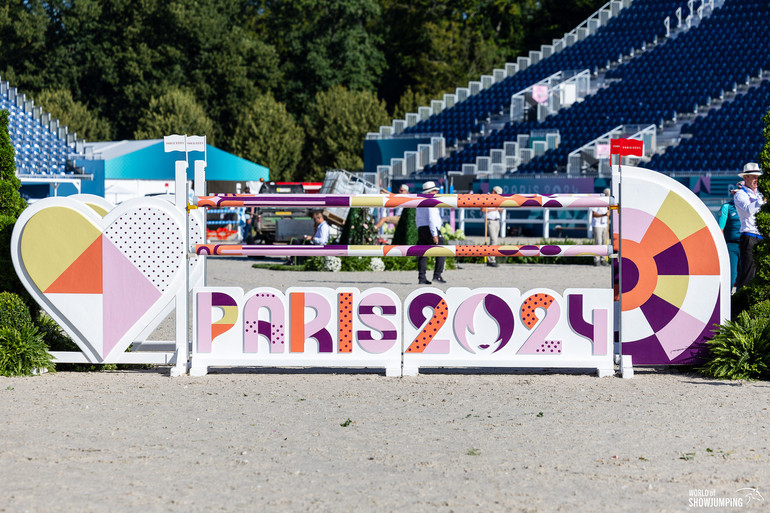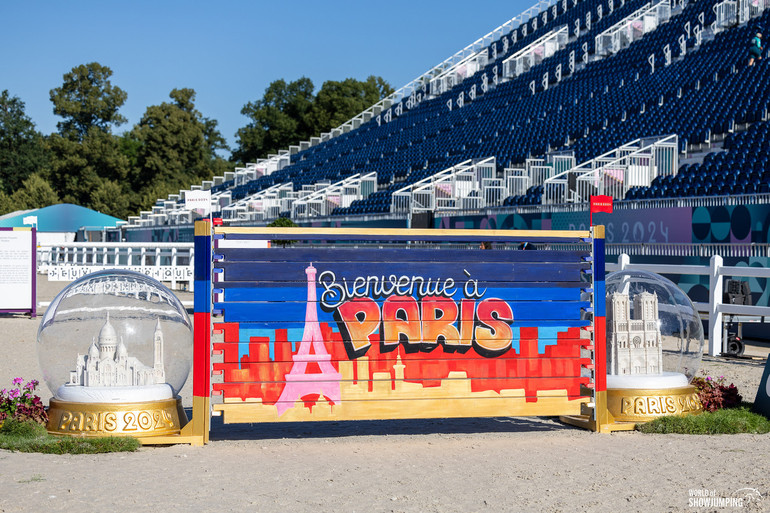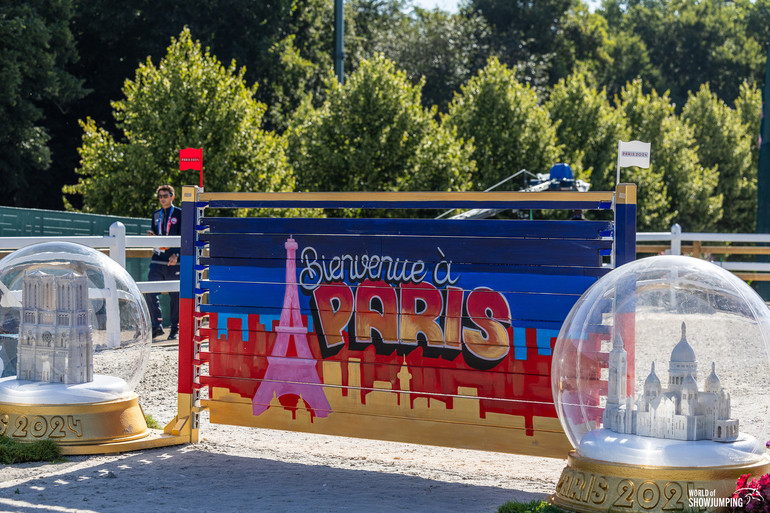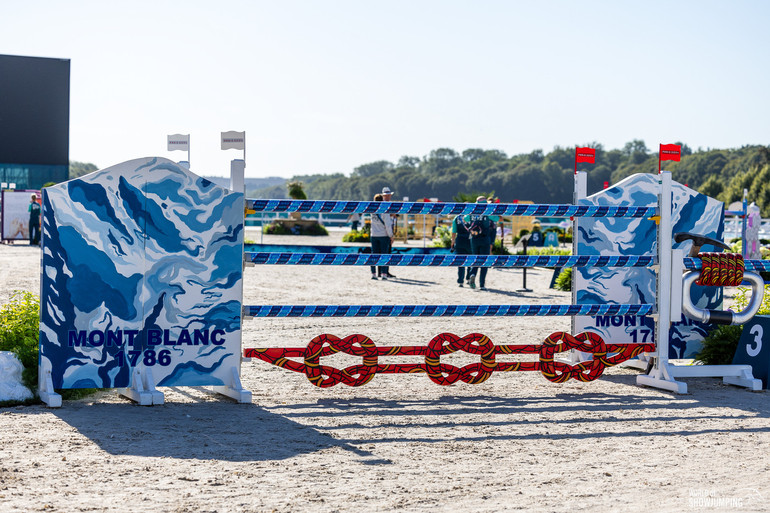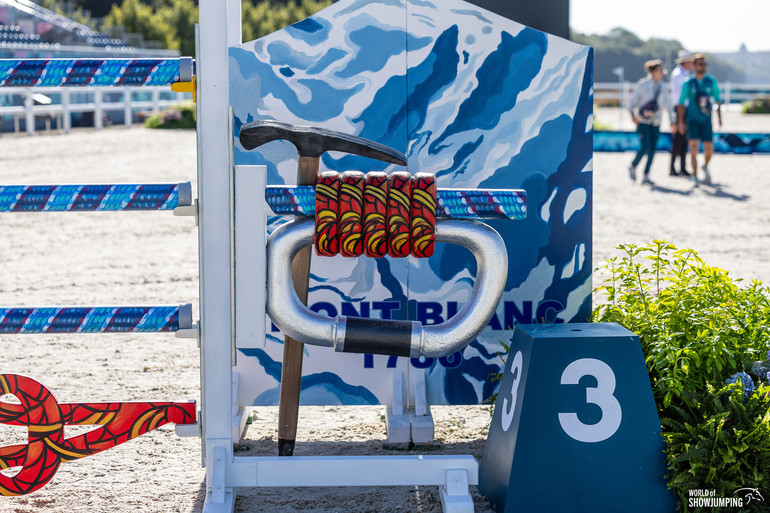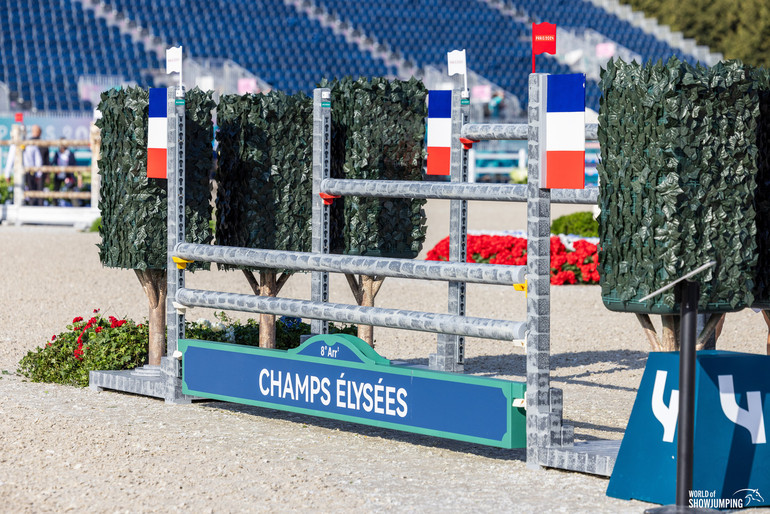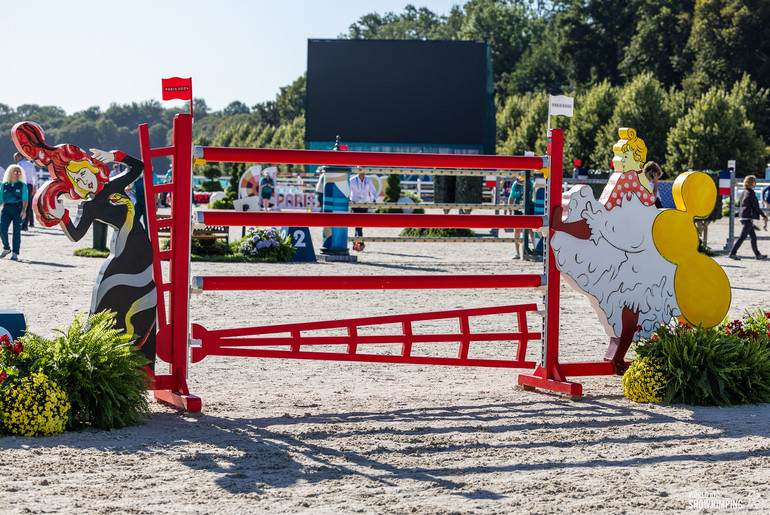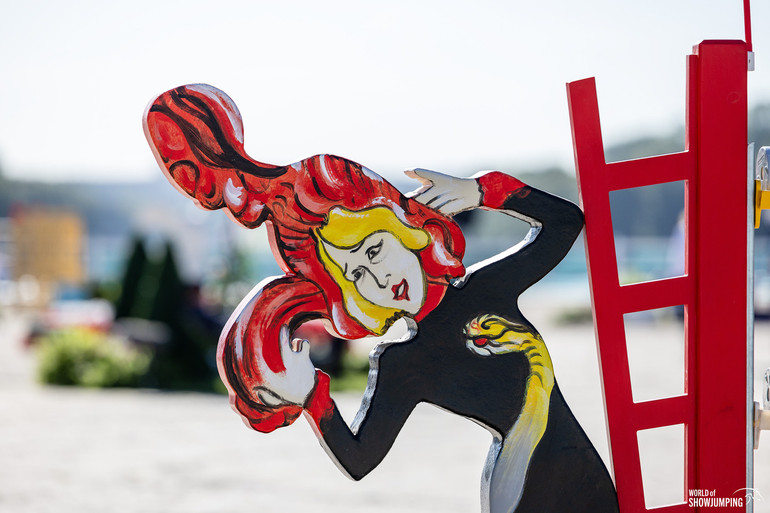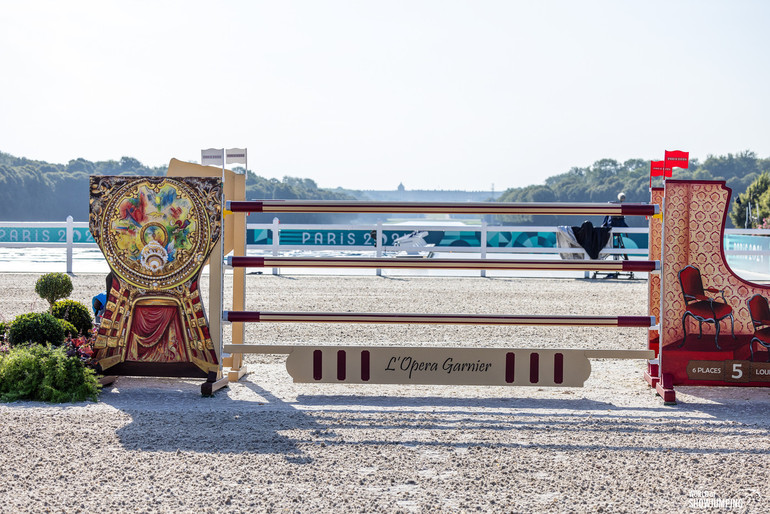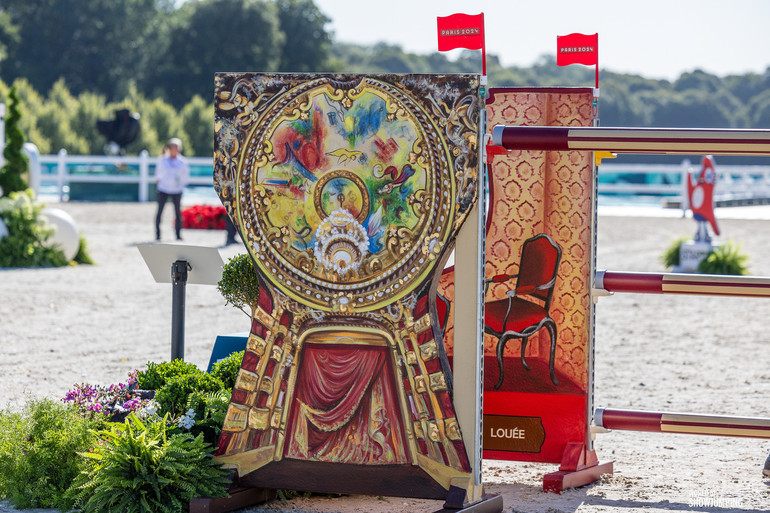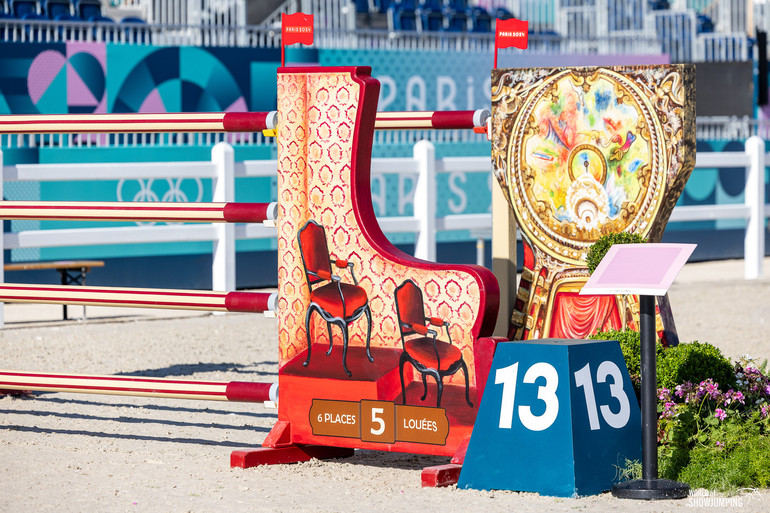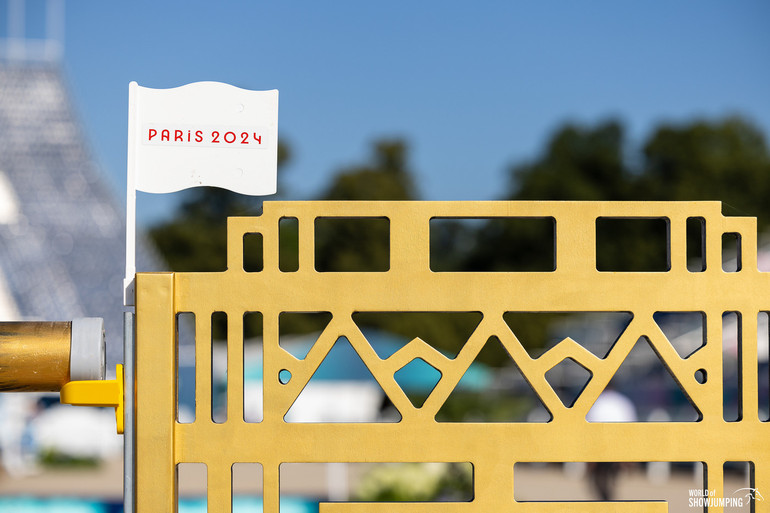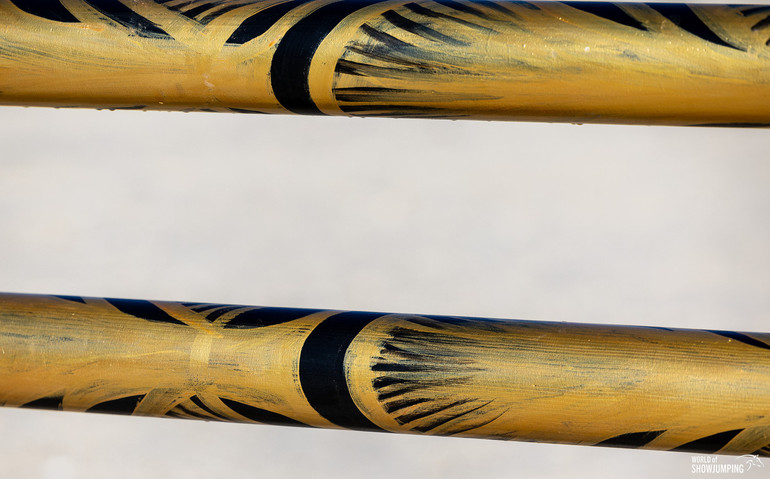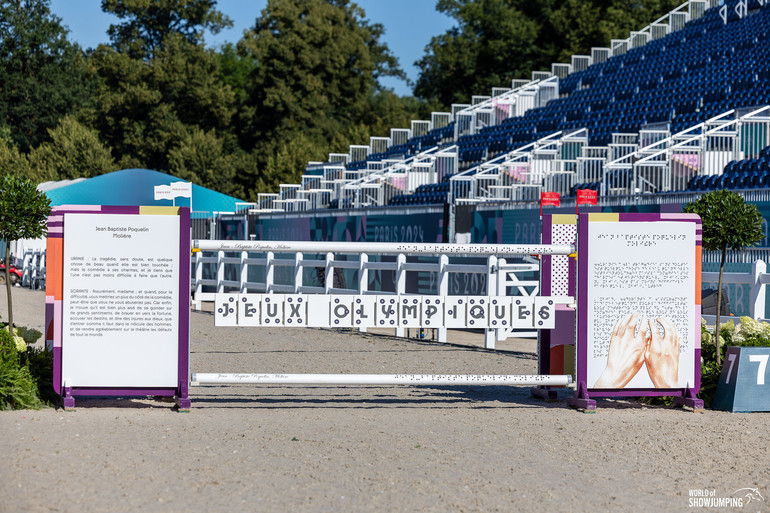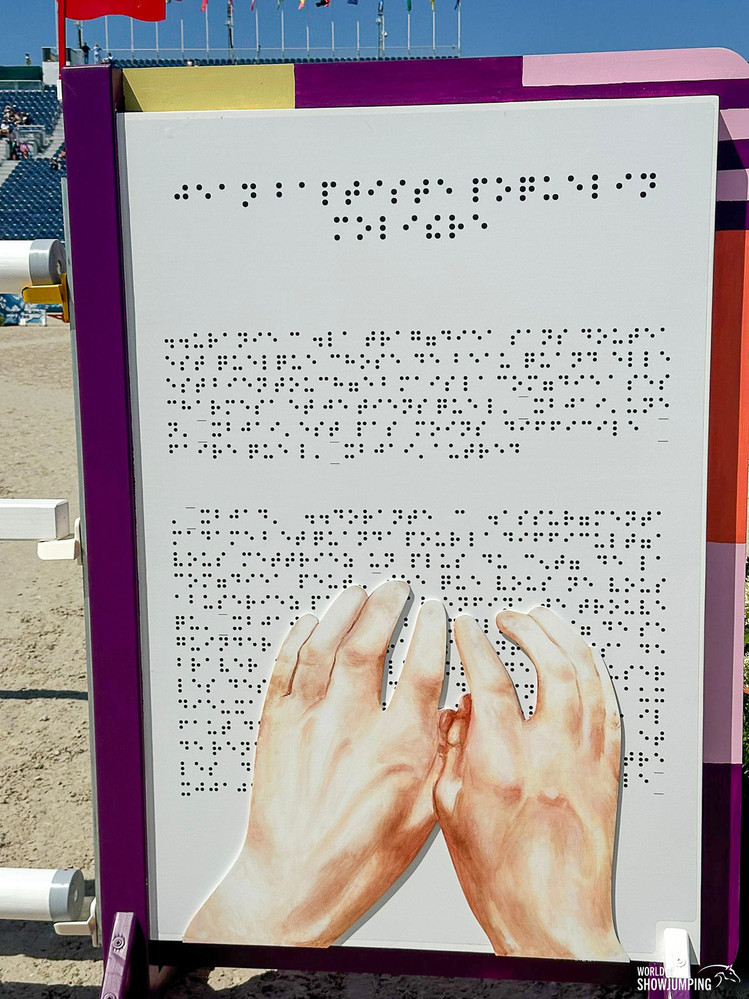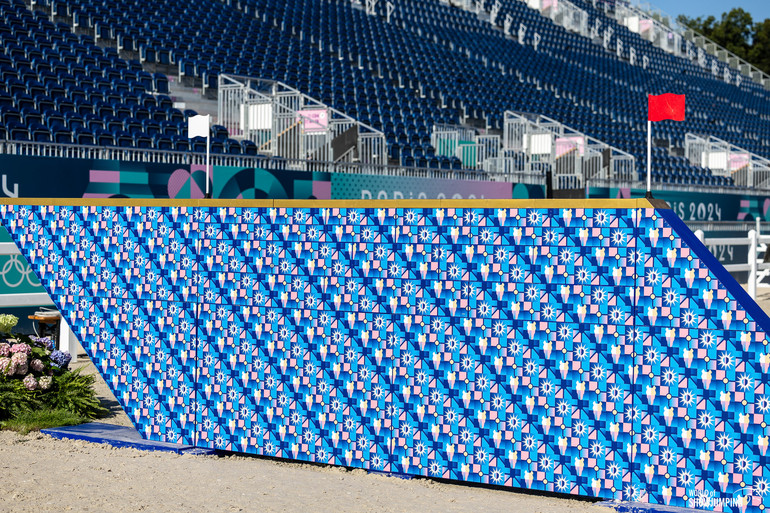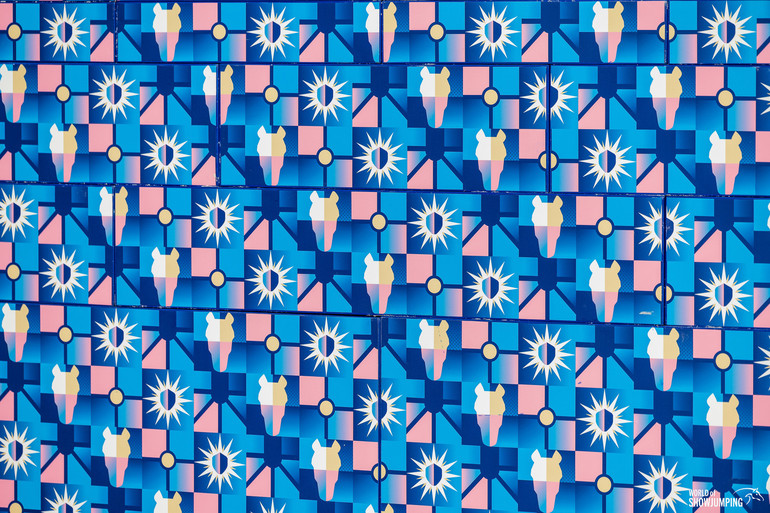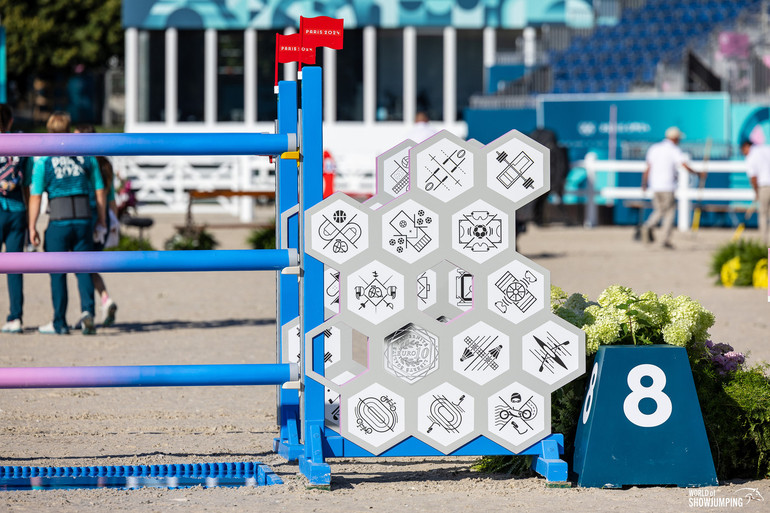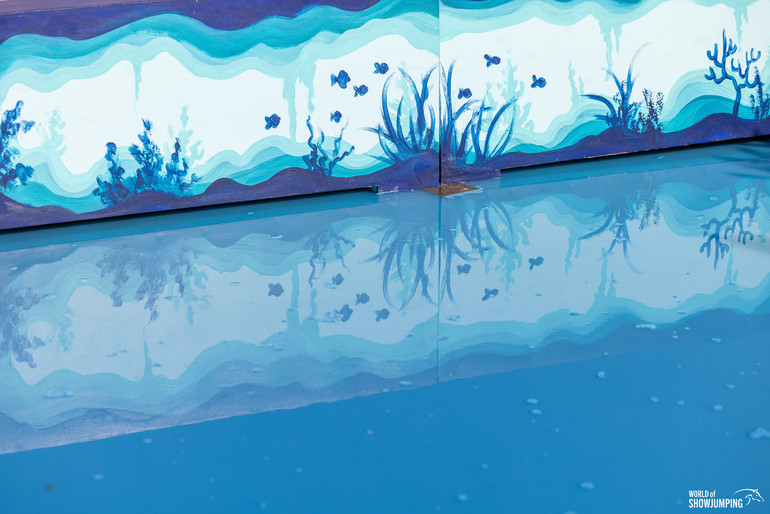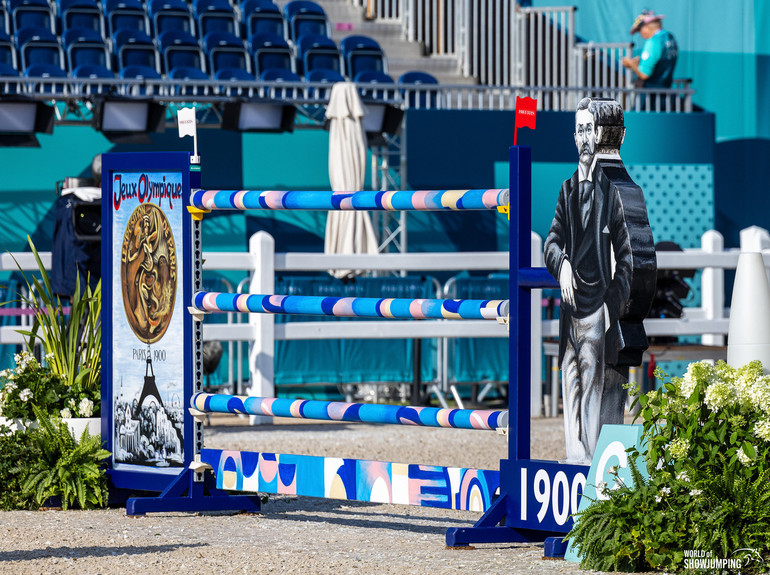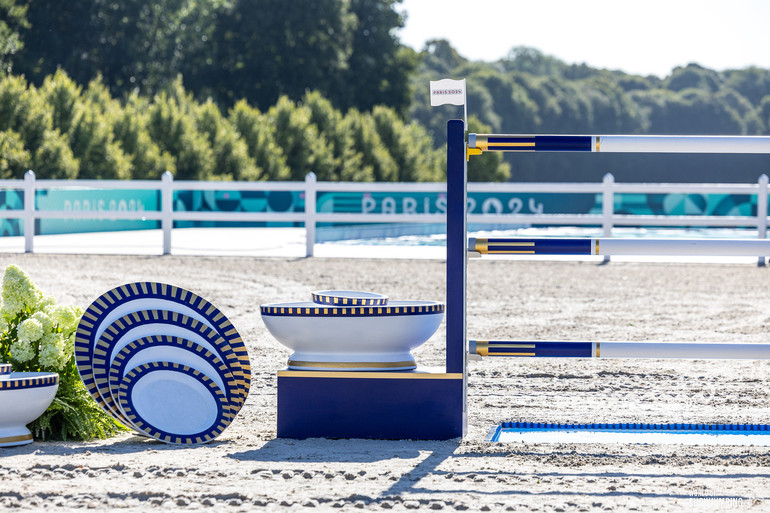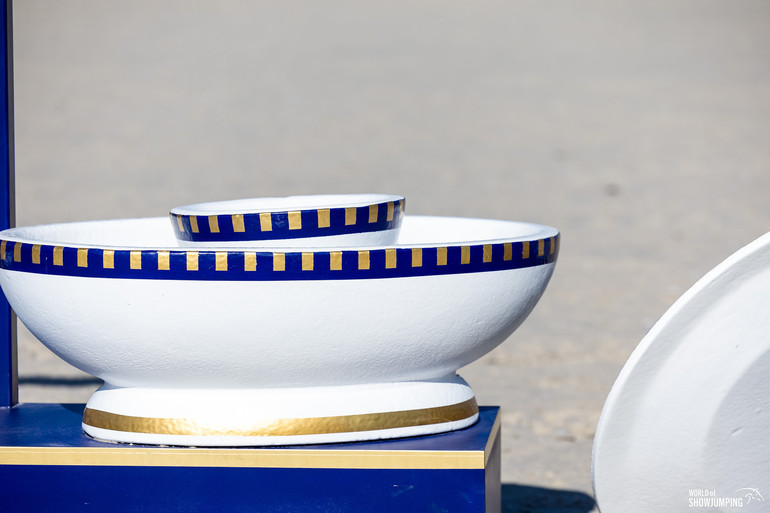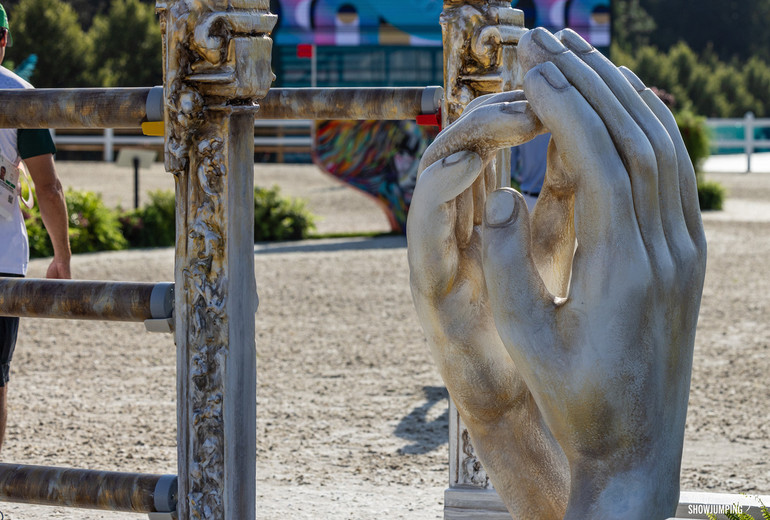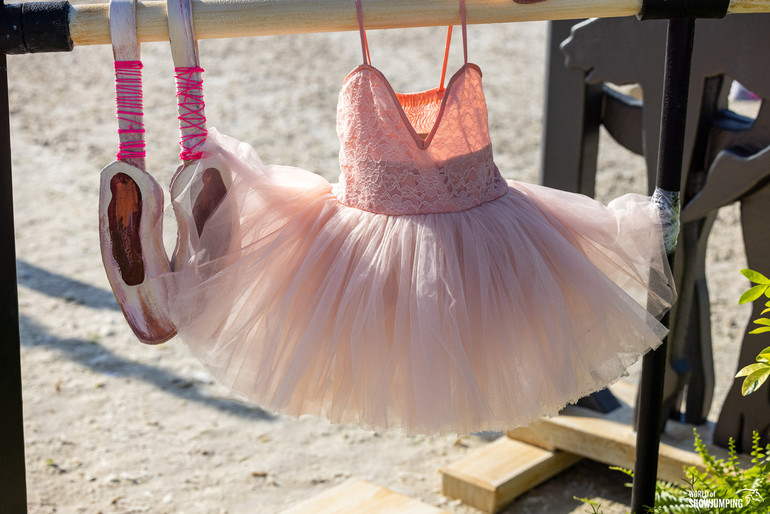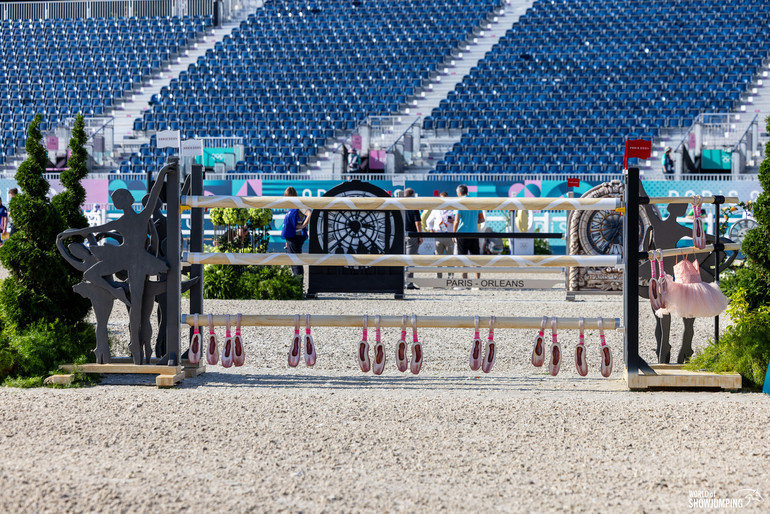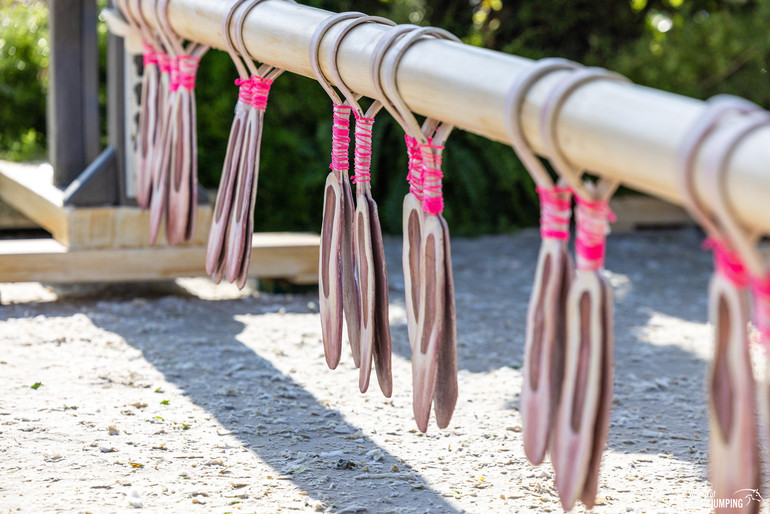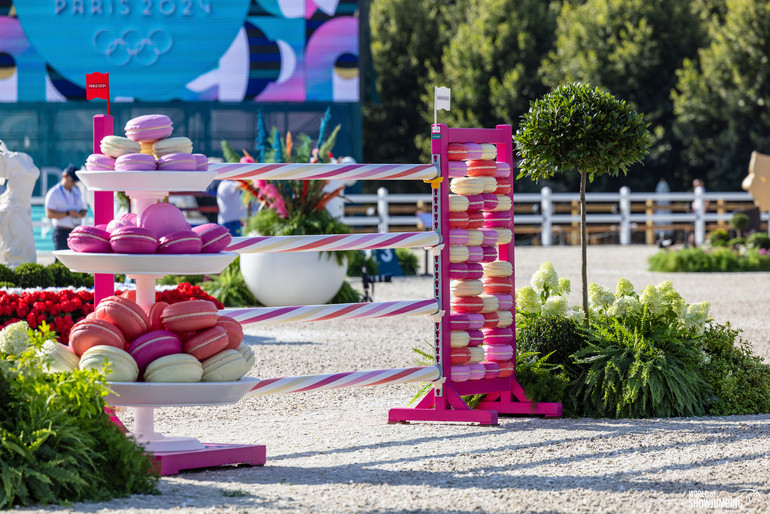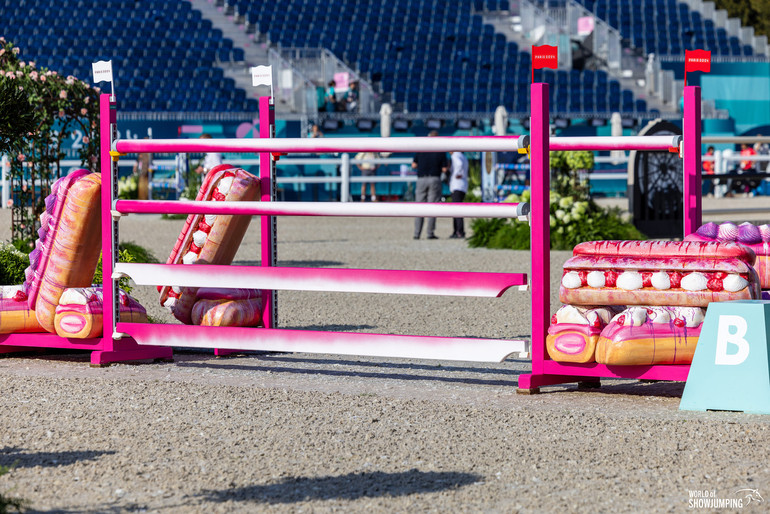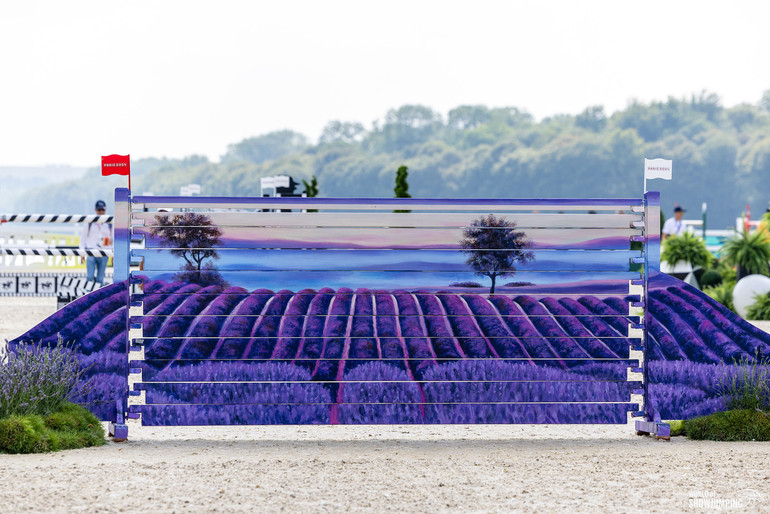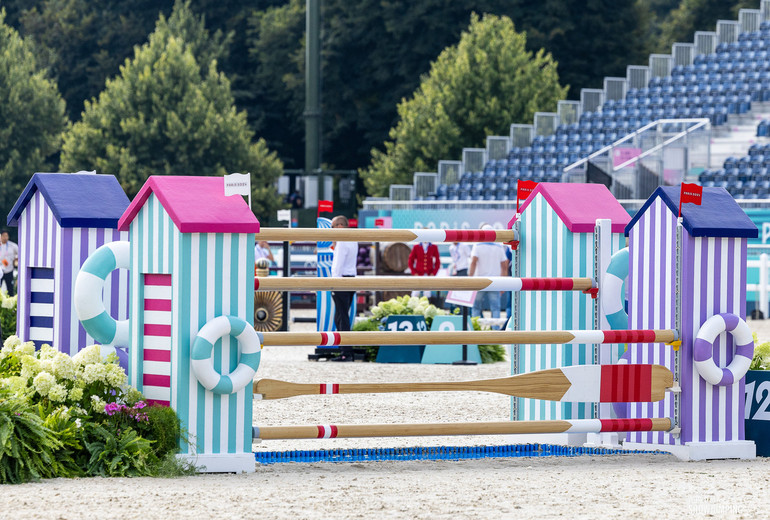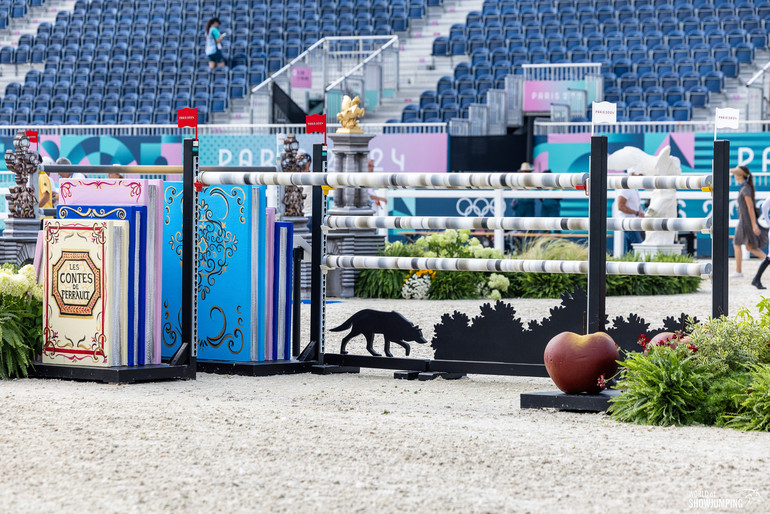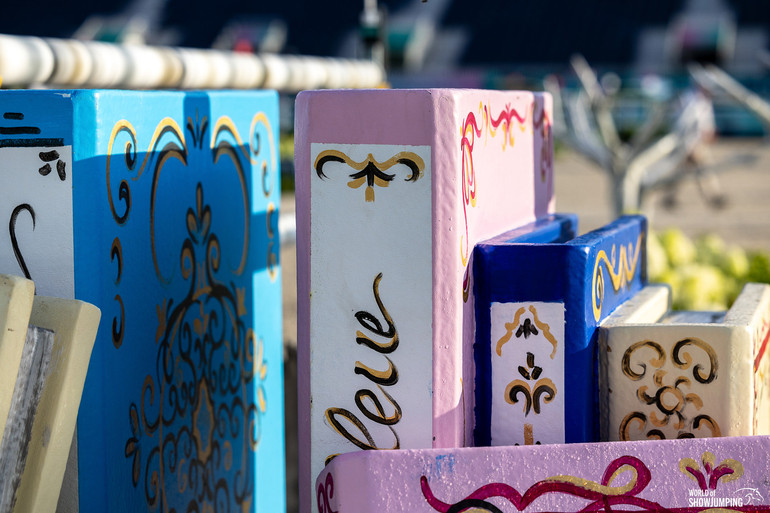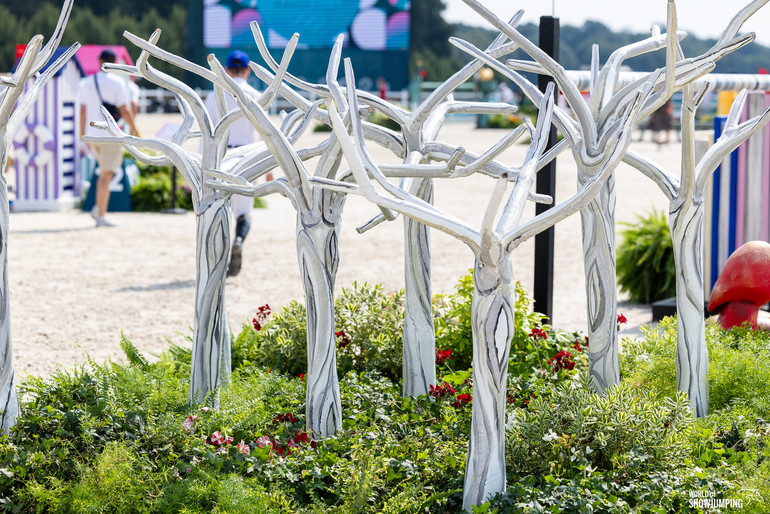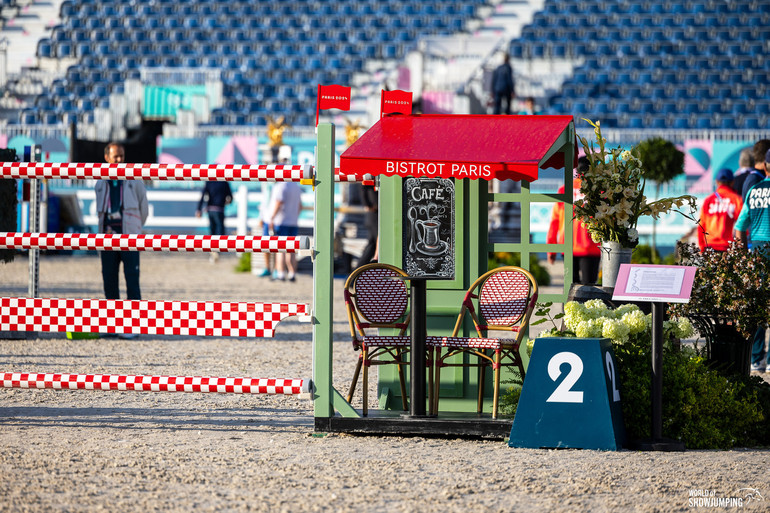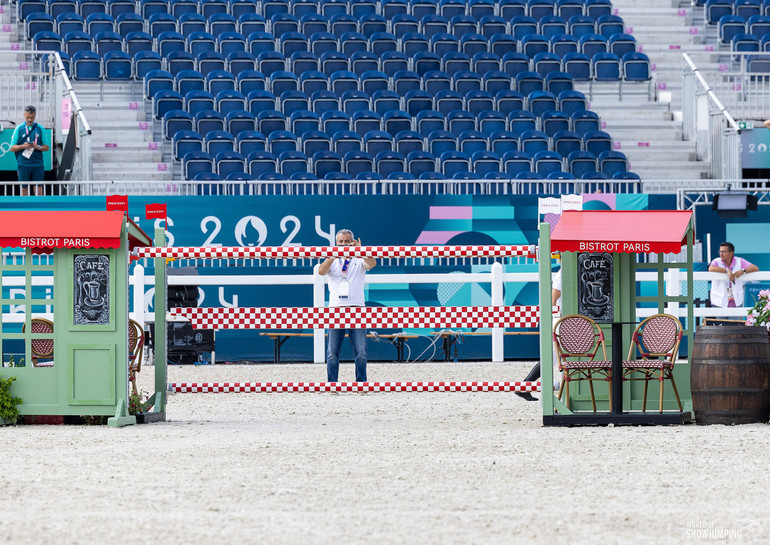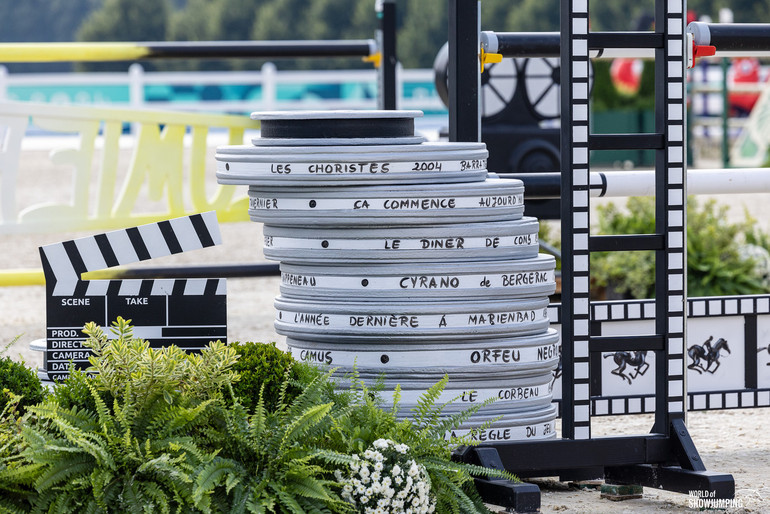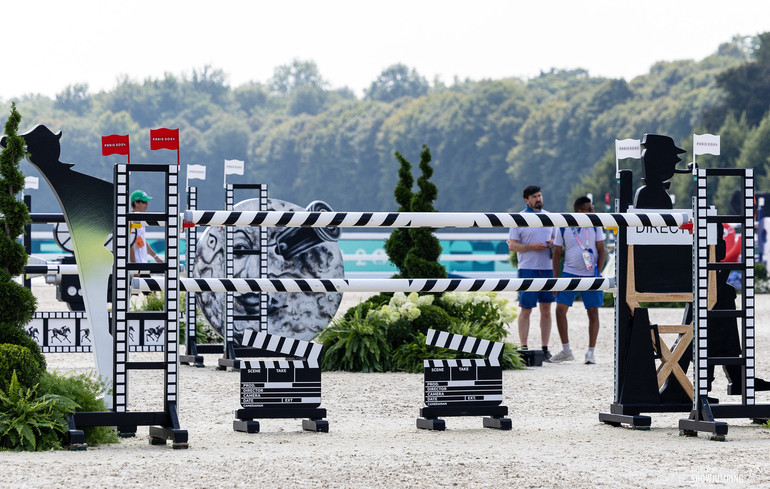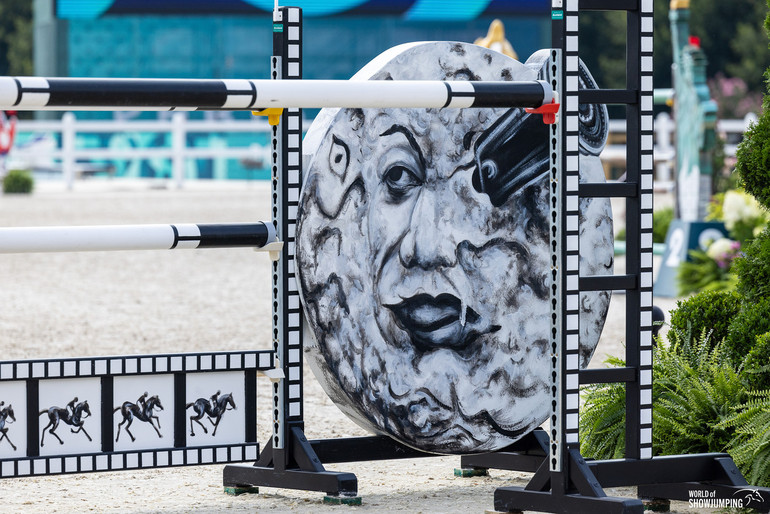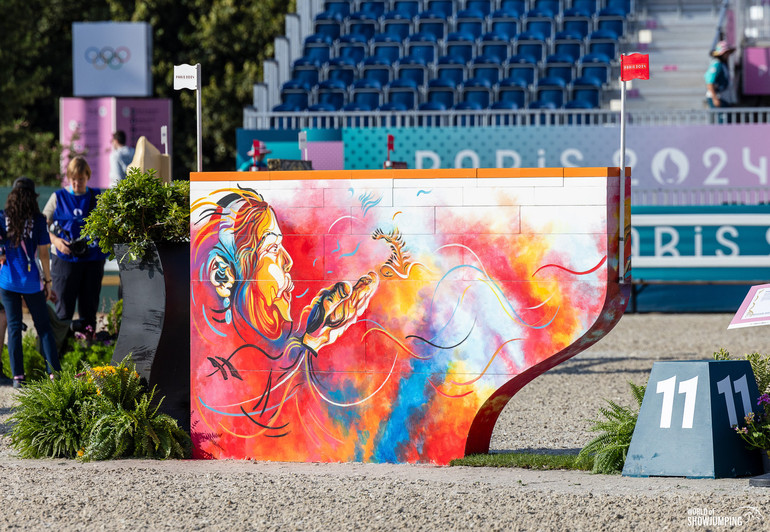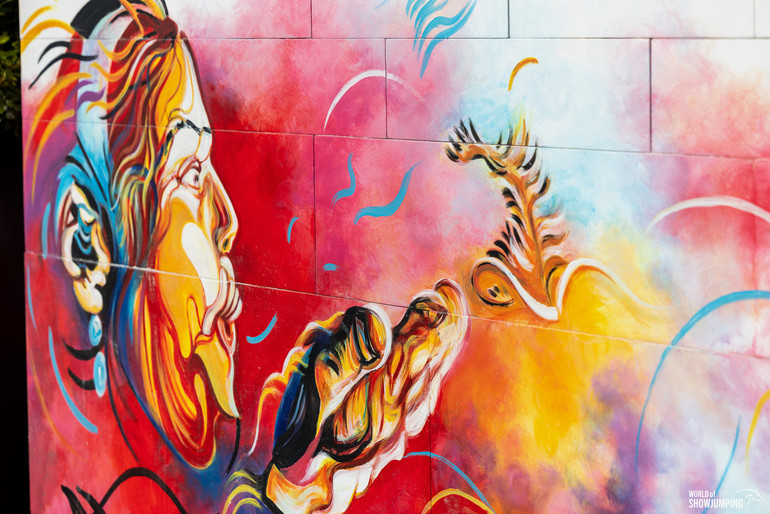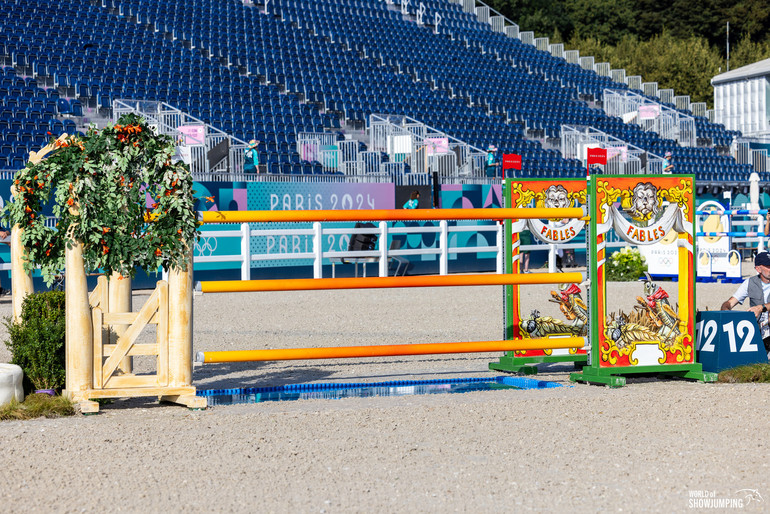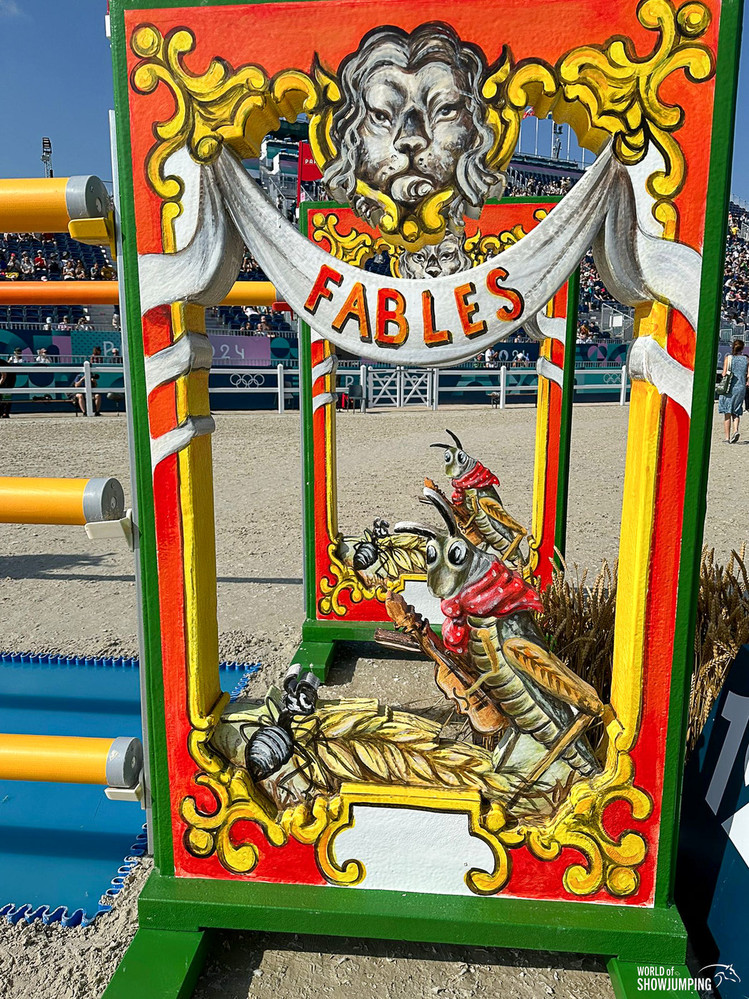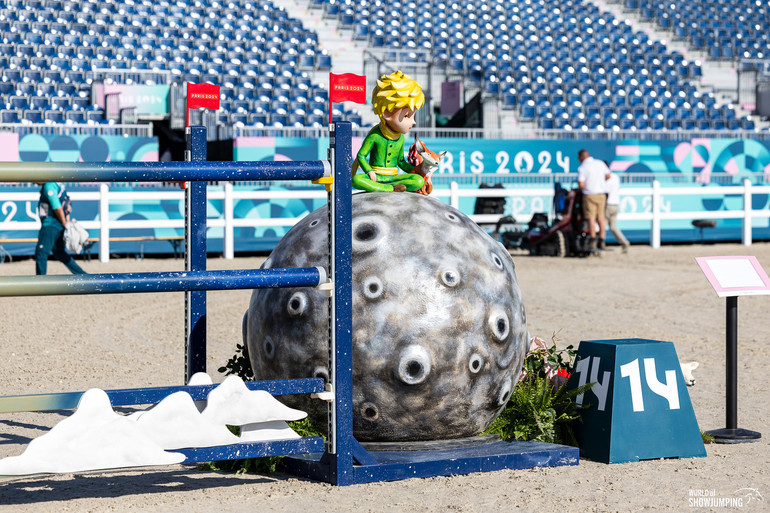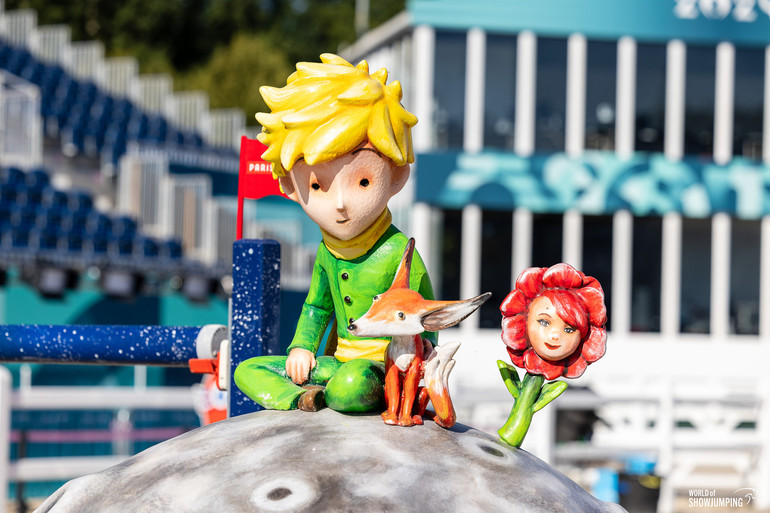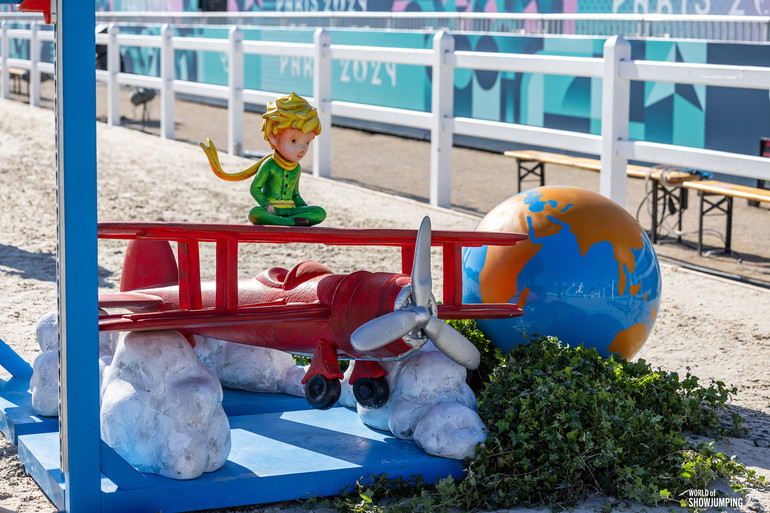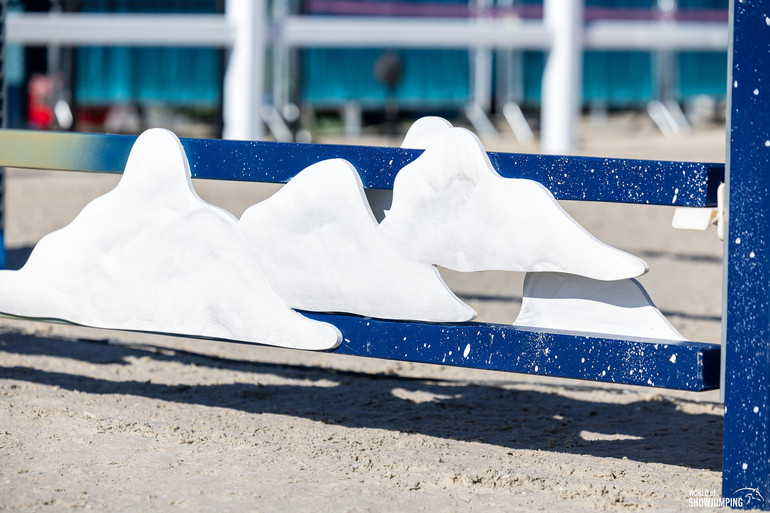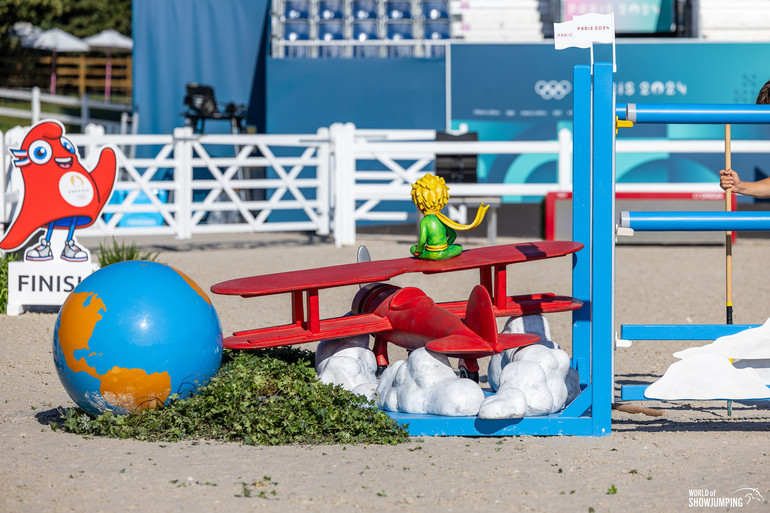Stunningly designed for the once-in-a-lifetime occasion of Paris 2024, the fences course designers Gregory Bodo (FRA) and Santiago Varela (ESP) displayed during the week-long competition in Versailles were as impressive as the backdrop of the Château and its magnificent gardens. And of course, we have dedicated two photo specials to these incredible jumps.
All photos © Jenny Abrahamsson for World of Showjumping. No reproduction of any of the content in this article will be accepted without a written permission, all rights reserved © World of Showjumping.com. If copyright violations occur, a penalty fee will apply.
Parisian tourism plays an important role in the city's economy and identity. Paris is recognized worldwide for its rich history, impressive architecture and artistic and cultural contribution. Emblematic monuments such as Notre-Dame Cathedral and the Château de Montmartre are cornerstones of this tourist attraction.
Notre-Dame Cathedral, an iconic symbol of Gothic architecture and a major cultural center, attracts millions of visitors annually. The reconstruction of Notre-Dame, following its fire in 2019, has also generated renewed international interest and solidarity.
Monumental and romantic, the cathedral of Notre Dame is the most famous church in Paris, and it has been the royal events and literary odes that have made Parisians leave a small place in their hearts for her. Within its Gothic walls passed the greatest of the Middle Ages to celebrate victories and state funerals, centuries later hosted the coronation of the Grand Corsican as emperor of France, and on its roofs, Victor Hugo placed the hunchback Quasimodo. But it was during the French Revolution when the cathedral lived its most agitated hours, with the irruption of the people in it, who decapitated dozens of sculptures, those who wore crowns with special emphasis, despite being biblical kings, to turn it into the temple of the goddess reason. The disk that marks the zero kilometer of Paris, le Point Zéro, and at the same time the official point of the road network of France, is located in front of the monumental Notre Dame Cathedral, on the Île de la Cité.
On the other hand, the Château de Montmartre, located on Montmartre hill, is another iconic place in France, which offers a unique view of the history of the city, contributing to its tourist attraction.
These monuments, along with other landmarks, are essential to the tourist experience in Paris, attracting visitors from around the world and providing cultural and economic wealth to the city. This tourist attraction means ample trade for local sellers of souvenirs, including snow globes. These souvenirs popular with tourists contain miniature replicas of iconic landmarks such as the Eiffel Tower, the Château de Montmartre or Notre-Dame, offering visitors a charming way to take the Parisian experience with them. In addition to being tangible souvenirs, these snow globes act as collectible symbols of a visit to France.
The summit of Mont Blanc, the culminating granite mountain of the Alps, despite certain differences according to cartographic sources, is a summit shared between Italy and France, following a bilateral agreement signed in 1860, the Treaty of Turin, in which the summit of Mont Blanc was divided between the two states, following the watershed.
It is the highest summit in Western Europe, the highest point of the European Union with an official altitude of 4807.81 meters above sea level, according to the latest measurement of 2021, although accurately, it is lower still, since its rocky top, 15 meters difference occupied by a layer of perpetual ice, which covers the head of the alpine colossus and varies each season.
According to the historical record, which dates back to the 19th century, the mountain has done nothing but decrease in size since then, with an average reduction in height of 21 centimeters per year, a phenomenon that affects the ice masses that cover the regions of the earth's surface, affected by global warming.
The Mer de Glace, the most important glacier of the Mont Blanc massif and the third largest in the Alps, which has shrunk two and a half kilometers and 200 meters thick since 1860. It has become a laboratory for climate change, as its glaciers are retreating.
The thawing of permafrost, the permanently frozen topsoil layer that has held the rock together for thousands of years like glue, is causing enormous changes in the orography and landscape of the mountain range, and dramatically so in the Mont Blanc massif.
The Mont Blanc massif was the starting point of mountaineering, whose expeditions began in the 18th century. In 1786, a guide and a doctor from Chamonix, equipped with rudimentary equipment, were the first to crown the mythical summit, known by the inhabitants of the region as the Accursed Mountain. The expedition set itself the goal of knowing the altitude and offered a reward to the first to find a way to the summit and succeed in ascending Mont Blanc for the first time. This challenge was the trigger for the first ascent of Mont Blanc and the birth of modern mountaineering. The first woman to reach the summit was Marie Paradis, on July 14, 1808, accompanying Jacques Balmat.
The Centre Pompidou, officially known as the Centre Georges Pompidou, is an outstanding museum located in the heart of Paris. Inaugurated in 1977, six years after its construction began, it stands out for its avant-garde architectural design, the work of architects Renzo Piano, Richard Rogers and Gianfranco Franchini.
The building defies convention and contrasts with the classic style of the city because its architects took industrial, factory elements such as ducts, stairs, pipes and ventilation ducts to the outside to give the museum as much exhibition space as possible, shaping the façade itself and creating an industrial and colorful look that makes it unique.
At the Pompidou Center, it's easy to see how things work. To bring some order to the chaotic facade, they painted each element in a color according to its function: blue for air conditioning, yellow for electricity, green for waste and red for transport.
The Pompidou Center houses the National Museum of Modern Art, with an extensive collection spanning artistic movements from the 20th century to the present day. Everything from paintings and sculptures to photographs and multimedia works, the collection offers a broad overview of modern and contemporary art. As a cultural and architectural icon, the Pompidou Center has become a landmark of the Parisian art scene. Its commitment to architectural innovation and the presentation of avant-garde works make it a great artistic expression.
The Champs Elysées, one of the most famous avenues in the world and most famous of Paris, which welcomes about 300,000 visitors per day. With 1910m long and 70 m wide, it extends from the Place de la Concorde to the Place de Charles De Gaulle, where it culminates with the perspective of the imposing Arc de Triomphe. The famous avenue was originally a swamp, and its construction as one of the first parks of the city, began in 1640, with the alignment of trees in continuity with the Tuileries Palace and the Louvre Museum, and with the layout designed by André Le Nôtre, gardener architect of the Sun King.
This tree-lined avenue has become more beautiful with each passing decade, a symbol of Parisian elegance and culture. Along its two kilometers, the Champs-Elysées is home to luxury boutiques, French brands, prestigious theaters such as the Théâtre des Champs-Élysées, refined restaurants and significant events, including parades and festivities to celebrate the New Year.
The classical architecture and sophistication of the avenue merge with the bustling commercial and cultural life, creating a unique atmosphere. The culmination of this majestic avenue is the iconic Arc de Triomphe, from where panoramic views of the city can be enjoyed. The Champs Elysées encapsulates the essence of Parisian glamour, attracting visitors from all over the world with its timeless charm and its contribution to the cultural and touristic richness of Paris.
The Champs Elysées are still evolving, and currently with the idea of returning the avenue to the use and enjoyment of Parisians, a major renovation project is being developed to gain pedestrian areas and transform it into an extraordinary garden.
Henri de Toulouse-Lautrec, a prominent French painter and poster artist of the late 19th century, born on November 24, 1864, in Albi, France, and died on September 9, 1901, left a lasting mark on the world of art and culture.
His work is characterized by capturing the bohemian life and nightlife of Paris during the Belle Époque, a time of relative peace and prosperity in Europe between the late 19th and early 20th centuries. He was particularly noted for his depictions of cabarets, theaters and brothels, with the Moulin Rouge being one of the most iconic places immortalized in his works.
Toulouse-Lautrec was known for his style, which combined vibrant colors and expressive lines. In addition to his artistic skill, he also excelled as a poster artist, depicting advertising posters that have become iconic works of art of the time.
Despite his short life, his artistic legacy has endured, and Henri de Toulouse-Lautrec has had a great influence on the development of modern art, especially in the field of poster art and the representation of urban life.
Restoration efforts since then have been aimed at restoring Notre-Dame to its splendor and preserving its architectural and cultural legacy for future generations.
Opera in France was introduced in the 17th century, initially with performances of Italian opera at the court of Anne of Austria. Jean-Baptiste Lully, an Italian composer, played a pivotal role in establishing a distinctively French operatic style and collaborating with Molière in the integration of music and scene. The founding of the Opéra Royal de Paris in 1669 by Louis XIV cemented the prominent position of French opera in European culture, leaving a significant mark on the history of music and the performing arts. Paris is a leading operatic epicenter, home to iconic theaters such as the Opéra Garnier and the Opéra Bastille.
Napoleon III on the occasion of the great works of remodeling and transformation of the city by Haussmann, commissioned a young and unknown architect the new opera house, becoming the thirteenth opera house in Paris after its foundation by King Louis XIV in 1669. After 15 years of construction, it was inaugurated in 1875, and the architect Charles Garnier eventually gave his name to the building. His acoustic studies and vision requirements shaped the horseshoe shape of the main hall, transforming it into one of the iconic opera houses.
The Opéra Garnier marked a new architectural trend that spread throughout the world under the name of Beaux Arts. The original ceiling of the dome of the central auditorium, painted in 1875, was transformed by the painter Marc Chagall, who incorporated great opera composers in a singular universe, and is a multicolored impact. Carefully placed over the original paintings, its inauguration in 1964 left no one indifferent, but it is now, with some perspective, that the bold contrast between the painting and its aristocratic surroundings can be appreciated.
French composers such as Georges Bizet and Jules Massenet have contributed to the international operatic repertoire with works such as "Carmen" and "Manon", and Jacques Offenbach, with his masterpiece "The Tales of Hoffmann", is an example of the richness and diversity of the French operatic repertoire, which is characterized by its fusion of dramatic and lyrical elements, incorporating ballets and elaborate choruses. Comic opera, which has flourished in France, stands out for its mixture of comedy and lyrical music.
France hosts renowned opera festivals, such as the Aix-en-Provence Festival and the Montpellier Opera Festival, which attract artists and opera lovers from around the world. Institutions such as the Opéra National de Paris and the Opéra Comique play a crucial role in preserving and promoting opera in the country, ensuring that this art form remains vibrant and accessible to current and future generations.
In the context of the Belle Époque and the interwar period, the Art Deco movement emerged as a stylistic response to the ornamental excess of Art Nouveau. This style, characterized by geometric lines, simplified forms and the use of modern materials, left a profound mark on the city's architecture and design. Landmark buildings such as the Théâtre des ChampsÉlysées, inaugurated in 1913, and the Palais de Chaillot, built for the 1937 International Exposition, epitomize the elegance and modernity of Art Deco in Paris.
This movement not only influenced architecture, but also left its mark on interior design and decoration. Clean-lined furniture, geometric lamps and ornate details became distinctive elements of the Art Deco aesthetic, fusing luxury and functionality. In addition, the urban expansion of Paris during this era led to the creation of grand avenues flanked by Art Deco buildings, representing the progressive spirit of the city.
Although Art Deco lost its prominence after World War II, its influence persists in Parisian architecture. Many buildings from this era contribute to the rich stylistic diversity and unique architectural charm of the French capital.
Braille is a tactile writing system in which every letter, every number and even every musical, mathematical and scientific symbol is represented by a combination of six raised dots.
The Braille system was invented by Louis Braille, who was born on January 4, 1809, in Coupvray, France. He was a French educator and musician who lost his sight at an early age due to an accident. Despite his visual impairment, Braille showed remarkable determination and intellectual ability from a young age, as, at the early age of 15, in 1824, he developed this very important system, greatly simplifying the precedents, which facilitated its dissemination.
Thanks to this tactile language configuration, it has been possible to provide blind and visually impaired people with access to education, culture, information, and the removal of all kinds of "visual" barriers in urban environments.
Seeking to avoid conventional representations of each sport, the pictograms designed for Paris 2024 take the form of a "coat of arms", serving as a distinctive symbol for each discipline. These eye-catching designs incorporate three fundamental graphic elements: an X-shaped axis of symmetry, a representation of the field of play and specific elements that characterize each sport.
The designers worked closely with the international federations, ensuring precision down to the smallest details of the various pictograms. This evolution aims to generate a more emotive symbol, transcending the mere visual representation of the sport. In total, 62 "badges" have been created to cover the various Olympic and Paralympic disciplines.
The introduction of pictograms to illustrate each sport dates back to the Tokyo 1964 Olympic Games, while the first pictograms for the Paralympic Games appeared for the first time in Barcelona 1992. The previous edition already sought to innovate in this respect, incorporating the first ever animated icons designed by Masaaki Hiromura. This continuous effort to evolve pictograms highlights the importance of these visual symbols in the dynamic and emotive representation of sports in Olympic and Paralympic events.
Jacques-Yves Cousteau was a famous French oceanographer, explorer, filmmaker and scientist. He was born on June 11, 1910, and died on June 25, 1997. Cousteau was a pioneer in underwater research and played a crucial role in the conservation and protection of the oceans.
Cousteau co-invented the modern diving regulator with Émile Gagnan, which allowed divers to explore the ocean depths more safely and efficiently. He also founded the Cousteau Society in 1973, an organization dedicated to marine conservation and ocean research.
Throughout his life, Cousteau led numerous underwater expeditions and produced a series of documentaries and television programs, such as the famous "The World of Silence" series. These works raised public awareness of the beauty and importance of the oceans, as well as the challenges they face due to pollution and exploitation.
Cousteau advocated for the protection of the oceans and the preservation of marine life, and his legacy lives on through the continuing work of the Cousteau Society and other organizations dedicated to marine conservation. His contribution to underwater exploration and environmental awareness has left a lasting mark on the history of oceanography and ocean conservation.
OOGG1900 The first to be held in Paris, and noted for its long duration, extending from May 14 to October 28, for its diversity of sports, which included not only traditional disciplines such as athletics and cycling, but also peculiar events such as cricket, croquet, golf and “Pelota Vasca”. In addition, it was the first time that women participated in the Olympic Games, with the victory of British tennis player Charlotte Cooper standing out.
However, the complexity together with the long duration of the events, marked these Games as unique in their history, contributing to the subsequent evolution of the event. OOGG 1924 marked the eighth edition of the modern era. This event was important for several reasons, including the debut of the Olympic flag with the five interlocking rings, symbolizing the union of the continents. France, as the host country, stood out in the medal standings, leading in the number of gold medals. In addition, these games marked the debut of women in athletics and swimming competitions. Technological innovation also played an important role, with live broadcasting of events via radio, allowing a wider audience to follow the sports competitions. The 1924 Paris Olympics are therefore known for their organization, innovation and significant increase in international participation.
OOGG 2024 Paris will host this year's XXXIII Summer Olympic Games, with the intention of becoming the most sustainable and eco-responsible games, giving importance to immersive experiences, with several participatory events for the public, taking place in the heart of Paris, making the most of the potential and historical significance of the city, so that the Champs Elysées will host cycling, Champs de Mars will host beach volleyball, the Seine River itself will be transformed into an Olympic swimming pool, triathlon events under the Eiffel Tower, skateboarding in the Place de la Concorde, tennis at Roland Garros, venues for various disciplines in Versailles, Les Invalides, Grand Palais, in the Arena Bercy... And at the same time sharing the development of the Games with venues all over France, reaching Marseille with sailing and even Tahiti with surfing. In Paris, a new Olympic sport, break dancing, will become an Olympic sport for the first time in history.
Limoges' porcelain is produced in the Limoges region of central France. It has been known for centuries for its quality and fine, detailed craftsmanship and has played an important role in the history of ceramics and porcelain.
The porcelain tradition in Limoges dates to the 18th century. During this period, deposits of kaolin were discovered in the region, a key component in the manufacture of porcelain. This discovery led to the development of the porcelain industry in this region. And some of the best-known factories include Haviland, Bernardaud and Raynaud.
Limoges’ porcelain has been used for a variety of purposes, from tableware to decorative objects and fine gifts. Recognizing authentic Limoges’ porcelain is simple: all objects from the French house bear the maker's stamp and their decoration often includes floral motifs, landscape scenes and gilded elements.
It is also highly appreciated by collectors around the world and its pieces are sought after by those who appreciate beauty.
If Florence can boast of having the Gates of Paradise, Paris can do the same with the Gates of Hell, a project said to be the best sculptor of the twentieth century, Auguste Rodin, unfinished by his death, but still totally iconic. At the Musée d'Orsay they keep the original in plaster, and two other original copies in metal are treasured in the sculptor's museums in Philadelphia and Tokyo.
The commission for "The Door of Hell" ("La Porte de l'Enfer"), which Rodin received in 1880, was to create a monumental set of sculptures for a new museum of decorative arts in Paris.
Rodin was inspired by Dante Alighieri's "The Divine Comedy" for this work and "The Thinker" was initially conceived as a representation of the Italian poet, Dante, reflecting on his work.
The Gothic Cathedral (right wing).
This work is part of a group of hands, mainly carved in marble after 1900, which also includes The Hand of God and The Hand of the Devil. All of them underline Rodin's great interest in this part of the human anatomy, which he isolated in order to give it an autonomous appearance. The Cathedral is expressed in this work by a pair of hands joined in prayer. Rodin himself stated that, having discovered in the ogive the main element of Gothic architecture, he wanted to express with these hands joined in prayer, by drawing an ogival form, a form equivalent to the cathedral. The sculptural composition is formed by two right hands belonging to two different persons, a man and a woman, curving towards each other in the form of a vault.
The original, preserved in the Musée Rodin in Paris, was carved in stone, the author having left the traces of his tools in the material.
The work was originally entitled The Ark of the Covenant, adopting the title by which it is known worldwide after Cathedrals of France.
The history of ballet in Paris began in the 17th century, when Jean-Baptiste Lully and Pierre Beauchamp laid the foundations at the court of Louis XIV. The creation of the Académie Royale de Danse in 1661 and the inauguration of the Paris Opera in 1875 marked fundamental milestones. These events contributed to the formalization of dance techniques and consolidated Paris as a world epicenter of classical ballet.
In the 20th century, the Ballet Russe de Monte Carlo, directed by Serge Diaghilev, played a leading role on the Parisian stage, introducing innovations. After World War II, ballet experienced a resurgence, and the arrival of Rudolf Nureyev in 1960 as director of the Paris Opera ballet marked a golden era. His collaboration with Margot Fonteyn contributed to the international prestige of the Parisian ballet.
Today, Paris remains a vibrant cultural center for ballet, were classical tradition merges with contemporary experimentation. From the Académie Royale de Danse to current explorations, the history of ballet in Paris reflects a rich artistic evolution that has left an indelible mark on the world dance scene.
French pastry gastronomy is a refined culinary art that has achieved worldwide renown. French pâtisserie encompasses a wide variety of exquisite creations ranging from Biscuit Rose, pink cookies originating from the city of Reims, in the Champagne region of France, whose origin dates to the 17th century, and since then, has been an important part of the rich culinary tradition of the Champagne region. Its characteristic pink hue gives it a unique visual appeal that complements its subtle flavor and versatility in the kitchen.
And modern delicacies such as the iconic macarons, composed of two small, round, smooth cookies in virtually every color and flavor, made with ground almonds, powdered sugar and egg whites, enveloping a creamy filling.
Or the mastery in the elaboration of flaky pastry, in croissants and pains au chocolat, emblematic of the French gastronomic tradition.
French master chocolatiers are renowned for their skill in high quality chocolate making, producing chocolates, bars and truffles that are true works of art. Pastry in France goes beyond simple confectionery, with innovative chefs applying modern techniques and elegant presentations in the creation of unique and artistic desserts. Attention to detail and savoirfaire are fundamental in French pastry, where each creation strives for perfection in terms of texture, taste and presentation. Although rooted in tradition, French pastry gastronomy also embraces creativity, allowing chefs to experiment with new ingredients and flavor combinations.
The Provence region, located in the southeast of France, is famous, among other things, for its extensive lavender fields. These fields are an iconic feature of Provence, attracting visitors from all over the world with their vibrant colors and fragrant landscapes. The lavender season generally reaches its peak in the summer, especially in the months of June and July.
In addition to being visually stunning, lavender fields are also prized for their distinctive aroma. Visitors often enjoy strolling through the fields, and their unique fragrance emanating from the lavender flowers, making them a major tourist attraction in the area. The transformation of the landscape of Provence's lavender fields offers spectacular views, with expanses of purple lavender stretching as far as the eye can see, creating an unforgettable visual spectacle. Some outstanding areas to experience the beauty of lavender fields include the Luberon Regional Natural Park region, the Plateau de Valensole and the Sault region.
The history of beach cabins is closely linked to the history of sea bathing, which started to become fashionable in the 19th century. These wooden (or cloth) cabins were at first mobile, placed on top of horse-drawn carts. Their purpose was to allow bathers to change without being seen, to store deck chairs, umbrellas, towels and beach equipment, or to protect themselves from the wind. White or colored, single-colored or striped, private or public, the cabins are part of the image of Normandy's seaside vacations.
There are many specimens that make the landscape of the Normandy coastline unique:
- in the dunes of Gouville, the 70 cabins with multicolored roofs are part of the postcard of this seaside village, destroyed during the Second World War.
- the cabins on the beach of Yport have a very harmonious marine look, white with black and blue stripes, among the most beautiful of the Alabaster coast.
- Deauville has 450 Art Deco-style bathing cabins, designed by the architect Charles Adda, who, in the 1920s, imagined the "Pompeian baths". Inspired by the Roman baths.
- Trouville with its beach cabins, which date back to 1939 has retained the image of a resort town.
- the 700 beach cabins in Le Havre that regained their initial 100% white appearance, painted in color between 2017 and 2021 by Dutch artist Karel Martens.
The collection of fairy tales written by Charles Perrault in the 17th century are classics of children's literature and are part of the legacy of French popular literature and have influenced many later adaptations in different forms of media, such as books, films and plays. Some of their most famous tales include Cinderella, Sleeping Beauty, Puss in Boots and Little Red Riding Hood.
Charles Perrault's version of Little Red Riding Hood is notable for its moralizing tone. In this story, Little Red Riding Hood, naive and disobedient, is seduced by the cunning wolf, who tricks her into revealing the location of her grandmother's house. The story warns of the dangers of disobedience and excessive trust in strangers, culminating in the moral lesson that obedience and prudence are essential virtues in life. This series of stories are collected in his work "Histoires ou contes de temps passé, avec des moralités" (Stories or tales of times past, with morals), first published in 1697, and which have endured over time.
The Parisian ambiance encapsulates the unique and distinctive essence of Paris, due to the city's rich history and culture, Parisian cafés are known for their cozy atmosphere and classic aesthetic, with wicker chairs and sidewalk tables that invite you to enjoy a coffee while watching life go by. Iconic establishments such as Café de Flore and Les Deux Magots in the Latin Quarter are emblematic of this tradition.
Bistros, on the other hand, are small, informal restaurants that serve homemade French cuisine. These places are known for offering traditional dishes such as cassoulet, coq au vin and bouillabaisse in a relaxed and friendly atmosphere. Many Parisian bistros have maintained their vintage charm and focus on the authenticity of the dining experience, making them popular spots for both locals and visitors looking to enjoy authentic French cuisine.
The origin of the bistros' name lies in the invasion of the Place du Tertre in Montmartre by the Cossacks in 1814, who came running to the establishments asking for alcohol. As they were not allowed to drink, they urged the waiter saying: 'bistro, bistro' which in Russian means: 'quick, quick', as they did not want to be caught by the officers with their elbows out during service hours.
The mythical café terraces with their chairs lined up in parallel, not part of the street furniture per se, but characteristic of the Parisian landscape, all placed in the same direction and facing the street, perfect for the Parisian sport of 'flâner'. The chair is made of a rattan grill back combined with shapes and colors depending on the style of the brasserie. The tables, called bistro tables, usually have a central black iron leg and a round marble plate. The classic Thonet No.14 or 'bistro chair', made of wood with a slatted seat, was created in 1859 by the eponymous German furniture designer, following a unique technique of steam bending wood that required years of refinement.
This design won a gold medal at the 1867 Paris World Exposition. Over the years coffee became popular among the upper classes, as did chocolate, which created a demand that was met by the first coffee shop in Paris, which opened its doors in 1686 in the Saint-Germain-des-Prés district under the name of Le Procope . Although it was a Sicilian named Procopo, and not a Frenchman, who had the brilliant idea. Only a decade later, coffee shops had already multiplied by 200 throughout the city, thanks to the fact that coffee was more affordable than chocolate and that the middle class became addicted to it.
The first forays into cinema took place in the 19th century in the United States and France, but it was in 1892 that the Frenchman Emile Reynaud introduced the fundamental concept of cinema: projecting films on a giant screen for the public to appreciate. At that time, films consisted mainly of animated images, marking the beginning of cinematic cartoons.
The Lumière brothers, Auguste and Louis, pioneers in the history of cinema, in 1895 triggered a revolution in presenting a series of animated photographs and later ventured into video recording with actors, giving rise to the first short films, each lasting less than a minute. Finally, in 1899, they projected the film "Cendrillon" with a duration of 6 minutes, a breakthrough for the time.
Until that time, French cinema remained in the realm of silent films, but in 1929, technological progress allowed the arrival of sound films, greatly increasing the expectation in theaters, marking a new era in film history.
Jacques Tati, the prominent French filmmaker and actor born in 1907, left an indelible mark on the history of cinema with his distinctive approach to visual comedy. Known for his recurring character, Monsieur Hulot, a bumbling but well-meaning man, Tati was noted for his ability to generate humor through everyday situations and his meticulous attention to visual detail. In his work, "Mon Oncle, the plot follows Hulot as he interacts with his nephew, who lives in an ultra-modern house. The film highlights the contrast between Hulot's charming and chaotic world and the rigidity of modern life. Recognized for its visual wit, the film won the Academy Award for Best Foreign Film in 1959, cementing Tati's position as an innovator in film comedy, and his works are highly influential in film comedy worldwide.
French cinema today remains relevant with leading directors such as Olivier Assayas and Céline Sciamma, while the Cannes Film Festival and the César Awards are key events that celebrate and recognize excellence in the industry. Cannes, one of the most prestigious festivals, awards the coveted Palme d'Or, while the César, the most prominent awards in France, cover several categories. In addition, the Lumière Awards and the French Film Critics' Syndicate Awards also contribute to the recognition of French cinema nationally and internationally, consolidating its position as a continuous source of innovation and cinematographic excellence.
Urban art in Paris has a rich history dating back decades, gaining momentum especially in the 1980s. Pioneering figures such as Blek le Rat and Miss Tic helped establish street art on the city's streets. Districts such as Le Marais and Belleville are known for their vibrant murals and urban art festivals that transform the streets into open-air galleries. One example of a dynamic platform is Le M.U.R. in the Oberkampf neighbourhood, where every two weeks a new artist exhibits his or her work.
Nuit Blanche, an annual event, celebrates contemporary art in Paris and includes installations and light projections throughout the city. Projects such as "100 Murs Pour La Paix" seek to beautify Paris with murals that convey messages of peace and tolerance. The city also attracts international artists, who participate in festivals and specific projects, bringing diversity and global reach to Parisian urban art. Some urban artists confront classical art by intervening in iconic places, establishing a visual dialogue between the traditional and the contemporary. Overall, urban art in Paris is a creative and dynamic expression that is uniquely integrated into the cultural and urban fabric of the city.
The French poet Jean de La Fontaine, contemporary of Moliere, member of the French Academy, was one of the most popular French writers, he belonged to the generation of the precursors of the Enlightenment. He achieved his literary fame thanks to the adaptation into French and inspiration of ancient fables and tales, of Aesopof Anatolia, he reinvented them with his own poetic and satirical style. "Fables of La Fontaine" were grouped in a collection of 243 fables, in 12 books, his first volume was published in 1668 and the last in 1694, a year before his death. These fables have become a classic work of French literature.
La Fontaine's fables are known for featuring anthropomorphized animals, that is, animals that have human characteristics and act as characters in the stories. Each fable usually concludes with a moral or life lesson. La Fontaine's work is appreciated for his keen observation of human nature and his ability to convey moral teachings through the witty and often humorous stories. Some of La Fontaine's best-known fables are "La Cigale et la Fourmi" (The Cicada and the Ant), "Le Corbeau et le Renard" (The Raven and the Fox) and "Le Lièvre et la Tortue" (The Hare and the Tortoise). These fables, initially conceived for an adult audience, have become a classic of children's literature since the 19th century and continue to be read and studied as a reference in French literature and education.
The Little Prince is a novel, known for its poetic approach and illustrations by the French author Antoine de Saint- Exupéry himself. It was published in 1943 and has become one of the most translated and best-selling works of world literature, with readers of all ages. The prominent writer and aviator was born in 1900 in Lyon, France.
A pioneering commercial aviation pilot, Saint-Exupéry channeled his experiences in the sky into his writings, fusing poetry with an exploration of the human condition. Saint-Exupéry's life was cut short during World War II, but his legacy lives on in both literature and aviation history. The story follows an aviator who crashes in the Sahara desert and finds a little prince who comes from another planet. As the aviator repairs his plane, the little prince shares his experiences, anecdotes and reflections on life, love, innocence and human nature.



